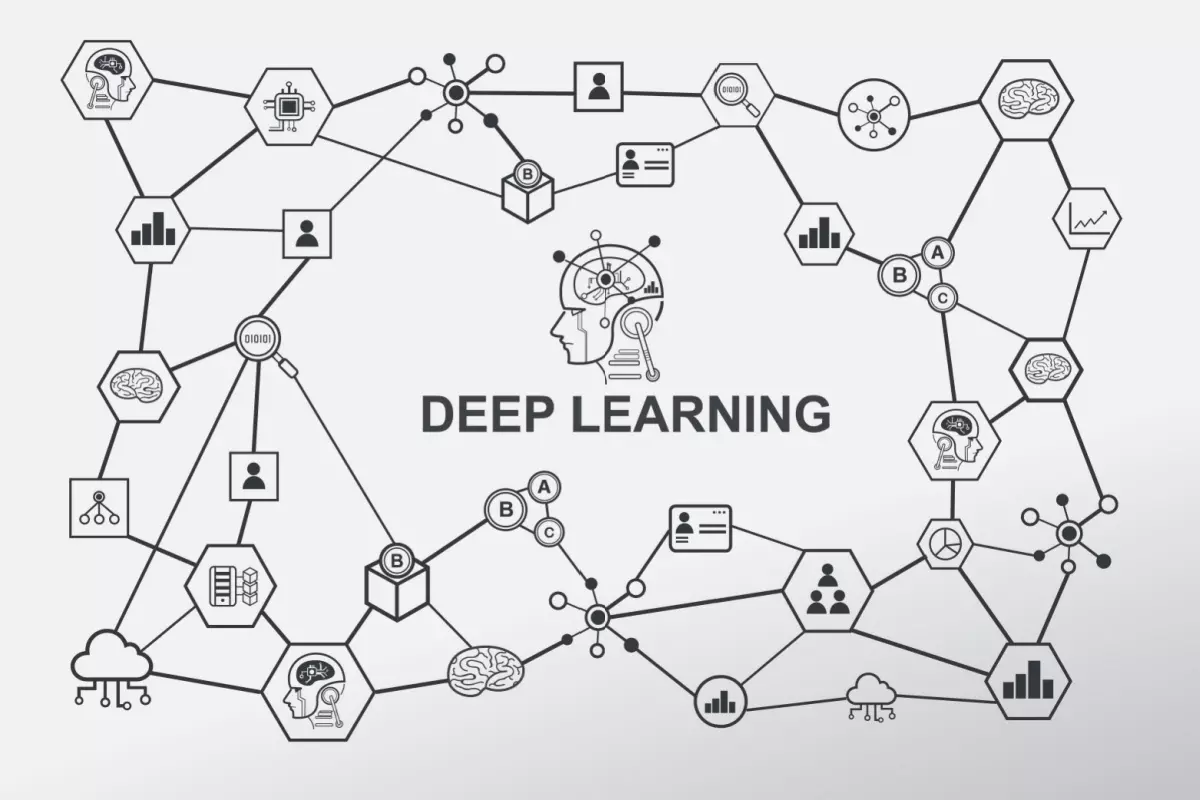Introduction to Parametric Modeling in Machine Learning
Imagine you’re trying to predict the sales of your online store for the next month. You have data from the past year, including site visits and total sales. Here’s where a parametric model steps in, focusing on the patterns that matter. The model helps you estimate future sales based on past data. This is the essence of parametric models in machine learning: using a well-defined set of rules to make sense of data and predict outcomes.
Try our real-time predictive modeling engine and create your first custom model in five minutes – no coding necessary!
- Fully operational AI with automated model building and deployment
- Data preprocessing and analysis tools
- Custom modeling solutions
- Actionable analytics
- A personalized approach to real-time decision making
This blog will unravel how parametric models simplify complex data puzzles, set them apart from other modeling approaches, and guide you in selecting the most fitting model for your data challenges. By the end, you’ll see how parametric models can be a game-changer for projects requiring clear, predictable insights.
What Is a Parametric Model?
Parametric models are designed to make predictions about future outcomes based on historical data. They use a set recipe of steps (parameters) to help predict what might happen next based on known data points.

At the heart of parametric models is the assumption about the distribution or relationship of the data. This could be an assumption that data points are related linearly or follow a certain statistical distribution. Regardless of how much data you have, a parametric model uses a set number of parameters to describe or predict data.
The process involves adjusting the model’s parameters so that it best fits the observed data. This is done through a process known as “training” or “fitting” the model to the data. Once the model is trained and the parameters are set, it can be used to make predictions about new data. The model applies the learned parameters to the new data to predict outcomes or classify data points.
For instance, if you’ve been tracking how many people visit your website and how many sales you make each month, a parametric model can help predict future sales. It looks at your past data and uses it to figure out a pattern—like noticing that more website visits usually mean more sales.
Then, it applies this pattern to guess how many sales you might make if your website visits increase. This way, if you’re thinking about boosting your website traffic, the model gives you a clear idea of how this could help your sales.
Characteristics of Parametric Models
Parametric models simplify data analysis by using a fixed set of parameters. Here are their key characteristics, offering insights into their reliability and versatility in making predictions and analyzing data:
- Fixed Number of Parameters: Parametric models are defined by a set number of parameters. This is like having a fixed number of dials to tune your radio; no matter how many stations (data points) you might want to listen to, you only have so many controls (parameters) to adjust the sound (model the data).
- Specific Form Assumed: These models assume a specific mathematical form or structure for the relationship between variables. It’s like assuming that all roads are straight when navigating a city. This assumption simplifies navigation (analysis), but it might not reflect the complexity of real winding roads (data relationships).
- Efficiency: With fewer parameters to adjust, parametric models can be very efficient in terms of computation. It’s similar to a simple recipe that requires only a few ingredients but still makes a delicious meal. This makes parametric models particularly useful when you have limited computational resources or need quick answers.
- Ease of Interpretation: Because of their simplicity and the clear mathematical structure, parametric models are usually easier to understand and interpret. This is akin to reading a book with a straightforward plot; you can easily see how characters (variables) influence the story (outcome).
- Generalization: Parametric models aim to generalize well from the training data to unseen data based on the assumption that the chosen form correctly captures the underlying relationship. This is like using a general map to navigate various cities, assuming that the basic layout of streets and landmarks applies broadly.
- Susceptible to Model Mis-Specification: If the assumed form of the model does not accurately represent the true relationship between variables, parametric models can lead to incorrect conclusions. It’s like using an outdated map; if the roads have changed, you might end up at the wrong destination.
- Limited Flexibility: Due to their fixed structure, parametric models can be less flexible in capturing complex, nonlinear relationships compared to non-parametric models. Imagine trying to fit a square peg into a round hole; if the shape (model assumption) doesn’t match the complexity of the hole (data), it won’t fit properly.
Advantages and Disadvantages of Parametric Models
Selecting a machine learning AI model affects your project’s success. Parametric models offer a structured approach with set parameters. Their performance varies based on the task and data. Here’s a quick guide to their pros and cons to help you decide if they’re right for you:
Pros:
- Speed and Efficiency: Parametric models are quicker to train because they work with a fixed number of parameters. This is particularly beneficial when computational resources are limited, or you need to make rapid decisions.
- Ease of Use: With their straightforward structure, these models are simpler to understand and apply, making them accessible to a wider range of users, not just data science experts.
- Less Data Needed: Unlike more complex models, parametric models don’t require huge volumes of data to start making accurate predictions. This can be a significant advantage when data collection is challenging or expensive.
Cons:
- Struggles with Complexity: Because parametric models rely on predetermined assumptions about data distribution, they may not perform well with highly complex data or data that deviates significantly from these assumptions.
- Risk of Oversimplification: The simplicity that makes parametric models appealing can also be a downside. They might oversimplify reality, missing subtle patterns or relationships present in the data, leading to less accurate predictions.
- Model Fit Issues: If the chosen model doesn’t quite match the underlying data structure, it can result in biased outcomes or errors in prediction. This misfit between model and data is a key factor to consider when selecting a parametric approach.
Non-Parametric Models
Non-parametric models are flexible models used in AI classification that do not make strict assumptions about the structure of the data or the form of the relationship between variables. The term “non-parametric” doesn’t mean there are no parameters. Instead, it means the number and nature of the parameters are not fixed in advance and can grow with the data.

Here’s a breakdown:
- Assumptions: Non-parametric models do not start with a predefined equation or distribution. They are designed to learn the structure directly from the data, allowing for a more flexible approach to modeling complex and nonlinear relationships.
- Adapting to Data: As more data becomes available, non-parametric models can adapt by adjusting their complexity. This means the model can become more detailed and nuanced as it learns from more data points.
- Training the Model: Training involves using data to determine the model structure, which is not predetermined. The process focuses on finding patterns or relationships directly from the data without imposing a strict formula or shape.
- Making Predictions: Non-parametric models make predictions using the structure learned from the data. Since this structure is not fixed, the model’s approach to prediction can be more nuanced and tailored to the data’s specific complexities.
- Flexibility: Non-parametric models are more flexible and can model complex, nonlinear relationships more effectively than parametric models, which are limited by their fixed structure.
- Computation: Because of their flexibility and the lack of a predetermined structure, non-parametric models can be more computationally intensive than parametric models.
Deciding Between Parametric and Non-Parametric Approaches
Selecting between parametric and non-parametric models depends on various factors, such as the nature of the data, analysis goals, and available resources. The following table provides a concise comparison to guide your choice, ensuring an informed decision for your data analysis project:
| Factor | Parametric Models | Non-Parametric Models |
| Underlying Data Structure | Best if you have a strong understanding of the underlying relationship or distribution in your data. These models require you to know or assume the form of the relationship between variables. | Best if the data relationship is unknown or highly complex. These models do not require a predetermined form and can adapt to the data, making them more flexible. |
| Complexity of Data Relationships | Ideal for simple, linear relationships. | Better suited for complex, nonlinear relationships. |
| Amount of Available Data | Can provide insights from small or limited datasets. | Require more data to achieve comparable accuracy to parametric models because they don’t make strong assumptions about the data structure. |
| Transparency and Interpretability | More transparent and easier to interpret because the relationship between variables is defined by a specific mathematical form. | Less transparent and harder to interpret because the model’s structure is determined from the data and can be complex. |
| Computational Resources | Generally demand less computational power, making them suitable for limited resources. | Requires more computational effort, especially as the dataset grows, because the model complexity can increase with more data. Best suited for resource-rich environments. |
| Predictive Accuracy/Generalization | Can be very accurate within their assumptions about data structure but might struggle with data outside these bounds. | Offer better performance with new data as they can adapt to and capture complex patterns more finely. |
Conclusion
Parametric models balance simplicity with the ability to make accurate predictions. Choosing parametric or non-parametric models will depend on the specific demands of your data and project goals.
With this guide, you now have a clearer understanding of when to leverage the efficiency of parametric models to your advantage. Armed with this insight, you’re now better prepared to select the suitable model for your tasks, enhancing your approach to machine learning.



